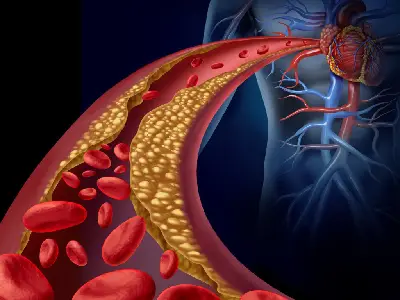Cholesterol and Lipid Disorders

Cholesterol is a fatty substance produced by the liver and acquired from some foods. The body needs cholesterol to maintain healthy cells and produce vitamin D and hormones to keep the bones, teeth, and muscle healthy. Cholesterol is also required to produce bile to digest fats. It is also essential to the brain, nerves, and skin.
Triglycerides are another type of fat that is derived from meals. After a meal, the fat in the food is broken down into triglycerides. On absorption, cholesterol becomes lipids, and then combine and travel with triglycerides as lipoproteins (lipids plus proteins) around the body. The different types of lipoprotein are LDL Cholesterol (low-density lipoprotein).
LDL is often called bad cholesterol because the cholesterol level is high, and when in excess, can build up and clog the arteries. HDL Cholesterol (high-density lipoprotein) is the other type of lipoprotein. HDL is often called good cholesterol because it contains more protein and little cholesterol. HDL helps to maintain a balance in the body’s cholesterol levels. There are other types of lipoprotein.
Here’s a breakdown of the key components of cholesterol and lipid disorders:
Cholesterol: Cholesterol is a waxy, fat-like substance that is essential for various bodily functions. It is a crucial component of cell membranes and is used to produce hormones (such as sex hormones and adrenal hormones) and vitamin D. Cholesterol is transported in the blood by lipoproteins, including low-density lipoprotein (LDL) and high-density lipoprotein (HDL).
LDL Cholesterol (Low-Density Lipoprotein): Often referred to as “bad” cholesterol, high levels of LDL cholesterol in the blood can lead to the buildup of plaque in the arteries (atherosclerosis), increasing the risk of heart disease and stroke.
HDL Cholesterol (High-Density Lipoprotein): Often referred to as “good” cholesterol, HDL cholesterol helps remove excess cholesterol from the bloodstream and carries it to the liver for processing and elimination. Higher levels of HDL are associated with a lower risk of heart disease.
2.Triglycerides: Triglycerides are another type of fat found in the blood. They are primarily derived from the fats we eat and are stored in fat cells for energy. Elevated triglyceride levels are associated with an increased risk of heart disease, particularly when combined with other lipid abnormalities.
